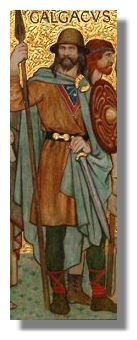MORE Roman gold is found in Britain than anywhere else - and now a Welsh academic has come up with an intriguing theory explaining why.
Thousands of gold and silver artifacts from the Roman period, especially when the conquerors finally left these islands in the 4th and 5th centuries.
Dr Peter Guest, of Cardiff University's School of History and Archaeology, is the leading expert on the biggest ever Roman gold treasure discovered in Britain. In 1992, 15,000 gold and silver coins were found at Hoxne in Suffolk in 1992.
Dr Guest explained that the gold mostly comes from a 50-year period towards the end of Roman occupation.
He said, "Before then, Britain is not very special, but in that 50-year phase, which coincides with the end of Roman control, lots of stuff is found.
"It normally consists of gold jewellery, spoons, toothpicks, thousands of coins and other items. I think connected to the fact that the Roman administration in Britain stops around 400 to 410 and the fact that the separation Britain experienced from the Roman Empire would have been so sudden.
"We had been part of the Empire for 350 years by that time, which is a very long time.
"It happened very suddenly and it might have been quite violent and one of the reasons for the huge amount of gold and silver is related to this separation.
"People weren't able to leave Britain and move somewhere else or weren't able to reuse it and recycle it and for some reason it has just stayed there." A theory already exists that people buried the treasure because of invasion from the Angles and Saxons of northern Germany.
Dr Guest said, " It is based on the Angles, Saxons and German groups coming over via the North Sea conquering eastern England, forcing all this gold and silver to be buried .
"The reason for that would have been people were being forced into slavery or killed.
"I think there is an element of truth in that but to blame the collapse of Roman gold on the Saxons is unfair. They wanted to come over here and live like the Romans, there was no point in them destroying everything.
"We need to be more careful and sophisticated in the way we approach this. The period we are looking at was known as the Dark Ages, there is very little archeological or historical evidence from the time."
 field were the vast legions of the mighty Roman Empire. On the other, a 30,000-strong confederate army of Caledonians ? our Scottish ancestors. This encounter, which became known as Mons Graupius, was a key moment for the Romans in their almighty struggle to conquer the whole of Britain. For the Scots, it was a battle for survival against a brutal occupation.
field were the vast legions of the mighty Roman Empire. On the other, a 30,000-strong confederate army of Caledonians ? our Scottish ancestors. This encounter, which became known as Mons Graupius, was a key moment for the Romans in their almighty struggle to conquer the whole of Britain. For the Scots, it was a battle for survival against a brutal occupation.
